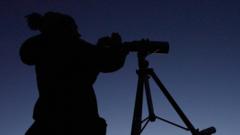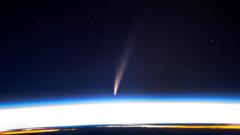Astronomers worldwide are bracing for an extraordinary celestial display as T Corona Borealis, a star system that shines brightly once every 80 years, is set to dazzle stargazers once again. This event stirs memories for Michael Woodman, who discovered the star in 1946 at just 15 years old while waiting for his father to return home.
That February night, Woodman gazed out from Newport and spotted a remarkably bright star in the constellation of Corona Borealis, prompting him to write to the Astronomer Royal. The response confirmed that he was the first in the country to witness this stellar phenomenon, a moment he fondly recalls even now at 94.
This recent stir in the astronomical community is sparked by predictions that T Corona Borealis will erupt again, possibly soon. Dr. Jenifer Millard from Fifth Star Labs shares information about locating the star, advising budding astronomers to find the Plough and trace its handle to Arcturus, then look to the west towards the constellation where T Corona Borealis may reappear.
Currently, the star is dim at magnitude 10 and won't be visible to the naked eye for long. Owning binoculars or a small telescope can extend viewing time. Dr. Jane Clark from the Cardiff Astronomical Society explains that the spectacle arises from a white dwarf star engaging in a gravitational dance with a larger red giant, resulting in periodic explosions that release massive bursts of energy.
T Corona Borealis is notorious for its erratic appearances with several false alarms in the past. Nonetheless, Dr. Chris North from Cardiff University indicates that current signs suggest it might erupt soon and could be visible again.
Woodman, who wants to relive the thrill of witnessing such a rare spectacle, expresses a desire to be driven far into the wilderness for optimal viewing. He humorously notes, “If I see it, I will be the only one who’s seen it twice,” emphasizing the rarity of this cosmic event, as the world turns its attention skyward, hoping for an unforgettable glimpse into the universe.






